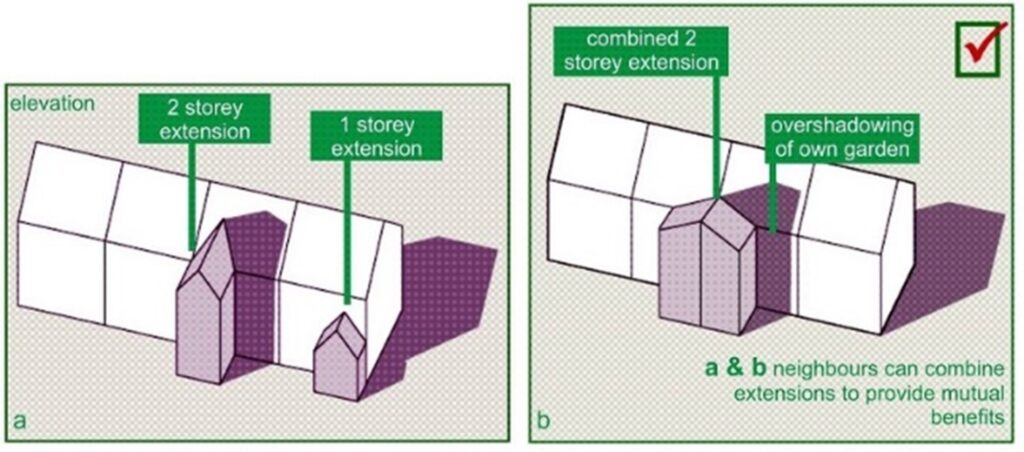Innovations in Natural Light Assessment Methods

Within the constantly changing landscape of property development, grasping the details of light rights surveys has never been more crucial. As urban environments grow more crowded and the value of daylight becomes progressively recognized, developers must maneuver through the legal frameworks surrounding light rights with caution and knowledge. A Right to Light survey is an essential tool that helps evaluate how a proposed development may impact the daylight received by neighboring homes. This practice not only protects the interests of nearby homeowners but also educates developers about potential challenges their projects might confront.
As we explore the innovations shaping Right to Light survey technology, it is crucial to consider why these assessments hold significant importance in the planning and development process. From the legal basis established over centuries to the newest developments in 3D modeling and sunpath analysis, comprehending the technologies and methodologies employed in these surveys can improve project outcomes. With the right knowledge and tools, developers can actively address possible disputes, ensuring that their developments are both in accordance and considerate of their surroundings.
Grasping Light Rights
The right to light is a legal right that allows landowners to obtain a particular level of natural light through their openings. This entitlement is acknowledged in many jurisdictions, including the UK, where it is derived from traditional law. The principle is that if a property has received natural light for an unbroken period of at least 20 years, the titleholder may have a claim to persist in enjoying that light, thus shielding their property from possible interferences created by new developments.
In real estate development scenarios, light rights is a critical consideration. Builders must consider the lighting circumstances that current structures experience to limit infringing on these rights. When designing new developments, it is essential to analyze how the new buildings will affect adjacent lots and the amount of daylight they receive. Not addressing these issues can result in objections, court cases, and serious monetary penalties.
Comprehending the details of right to light is crucial for both builders and proprietors. This entails identifying when a light rights assessment should be ordered, as well as the regulatory structures that support these rights. Knowledge with the consequences of construction on light access, and the processes to resolve any conflicts that may arise, is crucial for ensuring harmonious real estate development that respects both new construction and the established rights of neighbors.
Legal Considerations and Adherence
When undertaking a right to light survey, understanding the legal framework is essential for adherence and risk management. Property developers need to be cognizant of the consequences of violating on a neighbor's right to light, which could lead to possible conflicts or litigation. The regulations surrounding light rights in the UK are well-established, and developers must take into account these regulations during the planning phase of their developments to avoid issues.
In parallel to legal exposure, adherence with local planning regulations and building codes is essential. Developers should strive to ensure that their designs align with both right to light laws and any applicable zoning regulations that govern the use and construction of land. Non-compliance can result in expensive hold-ups or the need for significant changes to designs, which can impact schedules and budgets.
Strategic collaboration with light rights specialists or legal experts can help steer through the complexities of the law. These specialists can provide guidance into available legal options for violations of light rights and assist in addressing objections from adjacent property owners. By actively addressing possible light rights concerns, developers can protect their assets while cultivating good connections with the community.
Evaluation Strategies and Best Approaches
Conducting a Right to Light survey demands accurate methodologies to ensure accurate readings and evaluations. It typically begins with a detailed site evaluation, where surveyors study the geometric relationships between buildings and their surroundings. Using tools such as illumination analysis and light capture software can significantly enhance the data collection process. By utilizing advanced technology, surveyors can produce comprehensive models that demonstrate true-to-life lighting conditions, allowing for better predictions of light exposure.
Including 3D modeling approaches is a recommended practice that adds substantial value to Right to Light assessments. By creating accurate representations of both current and proposed developments, surveyors can visually illustrate how light flows across the site and affects adjacent properties. This method not only aids in compliance with the BRE guidelines but also provides clarity in conversations with stakeholders. It aids create a holistic view of potential light infringements and can guide developers in adjusting their designs proactively.
Continual collaboration with legal and planning experts is also essential throughout the survey process. Connecting with professionals knowledgeable in local regulations assists ensure all aspects of Right to Light are taken into account, reducing the risk of legal disputes. By keeping informed about https://righttolightsurveyors.uk/best-right-to-light-london/ and the developing landscape of light rights, surveyors can offer valuable insights that assist developers in taking informed decisions, consequently promoting harmonious developments that consider both property owners and their neighbors.

